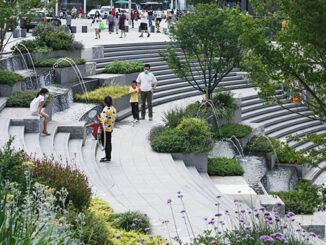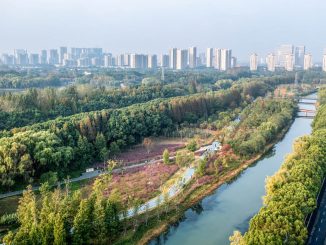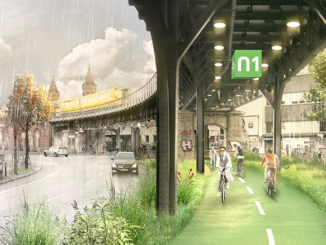Punggol Northshore was designed based on a Biophilic Town Framework, which seeks to achieve greater environmental health, better ecological integrity and human well-being. The project site includes a commercial centre, 2 community parks, 4 public housing precincts comprising some 3000 apartment units, and a streetscape that spans the development parcels.
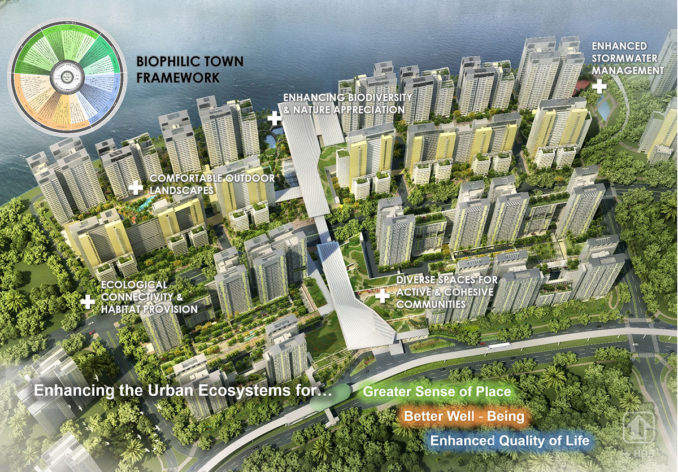
The Biophilic Town Framework outlines the strategies needed to plan and design urban landscapes, to achieve the larger urban development goals of sustainability, liveability and resilience. It encapsulates a comprehensive set of considerations in five key elements of the environment landscape — soil, flora and fauna, outdoor comfort, water, and people, together with their corresponding urban ecosystem services. Guided by the framework, landscape architects will be able to holistically assess how these elements can be incorporated into the neighbourhood landscape from the outset, and put forth an optimal design that harmonises both the habitat and its inhabitants.
Three key objectives were outlined under the Biophilic Design Approach: to enhance existing natural habitats, to reconnect with nature, and to sustain urban ecosystem services. To achieve that, the design at Punggol Northshore focused on strengthening the accessibility to nature spaces; maintaining the existing ecological balance; enhancing outdoor comfort; improving water quality and optimizing the delivery of urban ecosystem services.
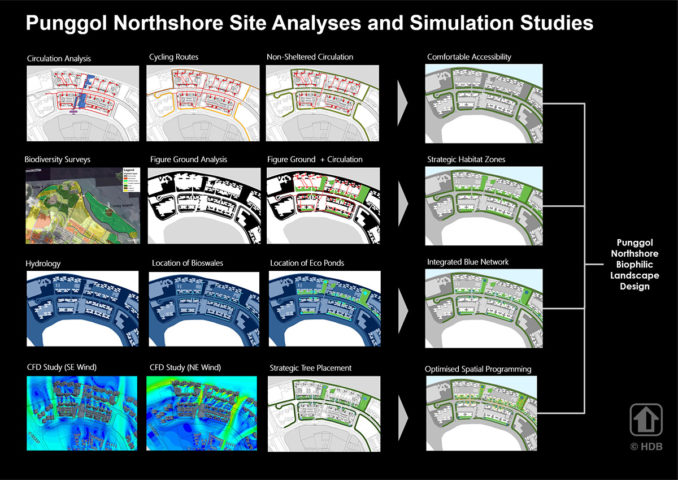
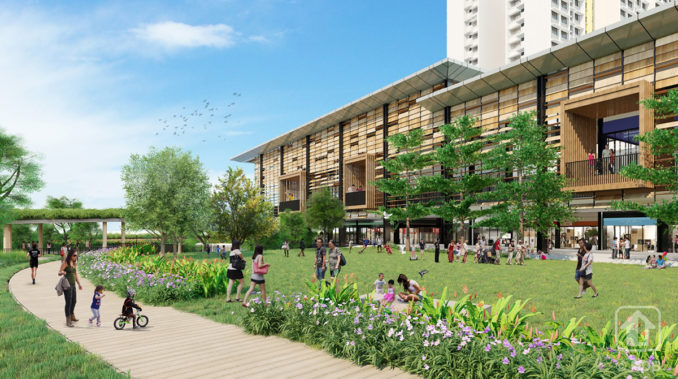
At the onset, site analyses were carried out to determine the ideal location of green corridors for enhanced ecological connectivity between existing habitats in the district and beyond. This sought to maintain the ecological balance and promote good ecological integrity for the district. A detailed biodiversity study was commissioned to obtain biodiversity data of the site. With information on the existing species of birds, butterflies, and dragonflies, habitats such as bird sanctuaries, butterfly gardens and dragonfly ponds were created across development parcels. Plant species that corresponds to the needs of the existing fauna species were incorporated into the diverse habitats to allow the original biodiversity to continue thriving and new biodiversity to emerge after the developments are completed.
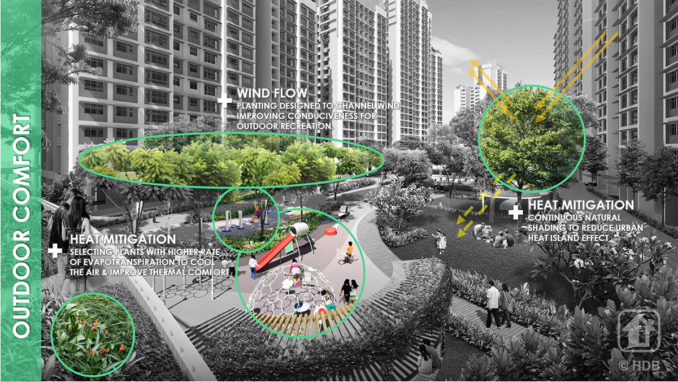
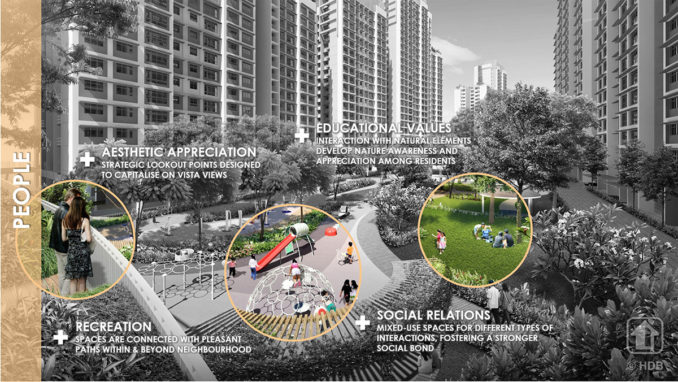
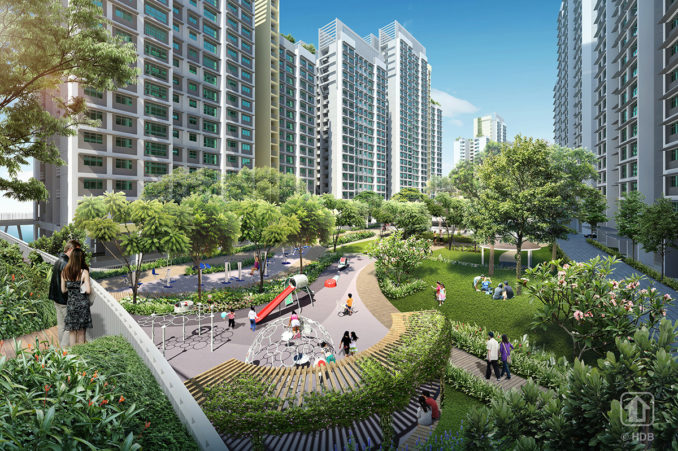
For effective stormwater management, an interconnected network of bioswales and rain gardens was incorporated into the design of each site, facilitating stormwater regulation, groundwater infiltration, and water purification. Cleansed water from the bioswales was designed to flow into ecological ponds, which were introduced to help in vector control by serving as habitats for species (such as amphibians and dragonflies) that prey on mosquitoes. These ecological ponds also offer points of interest that draw the public closer to nature to enjoy the multi-sensory experience and restorative attributes that the water element offers.
Outdoor comfort was another key consideration in the planning and design of Punggol Northshore, to encourage residents to immerse in nature and mingle with people living in their neighbourhood. Wind and sunlight simulation studies were conducted to gain an in-depth understanding of the climatic conditions in the District. Through data gathering and analysis, community facilities and pedestrian networks were designed and sited to offer maximum outdoor comfort. For instance, footpaths were placed along key wind channels to offer a pleasant walk, while playgrounds and garden trails where residents linger were shielded from direct sunlight and glare. In addition, trees with dense canopies were strategically planted to channel wind flow towards activity areas, to further optimise the thermal comfort. Trees effective in carbon sequestration and air quality management were also planted throughout the site to mitigate the urban heat island effect and enhance the overall air quality in the surrounding.
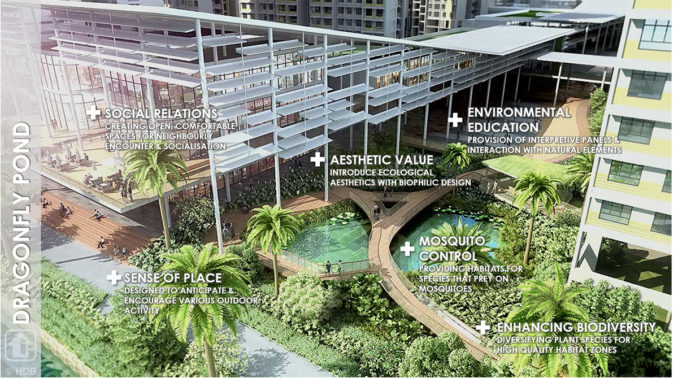
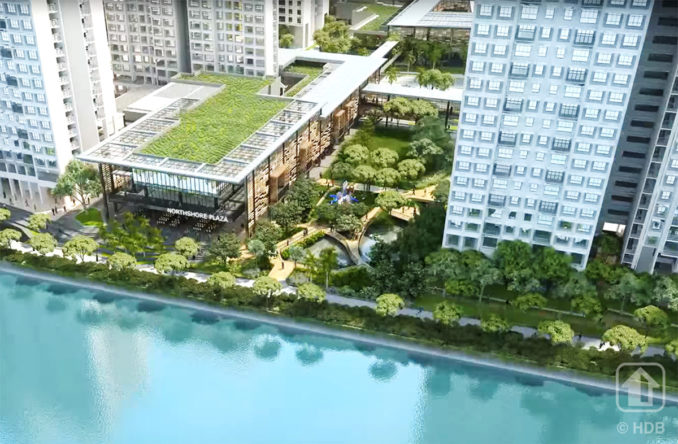
To inject more nature into Punggol Northshore, a hierarchy of greenery, comprising precinct gardens, landscaped decks, common greens, and sky gardens, was designed to weave through the developments. Capitalising on its waterfront location, a seafront viewing deck was also added to offer scenic views of the waterfront promenade. To enhance residents’ environmental awareness and appreciation of nature, information panels and educational pavilions have also been strategically located next to the unique landscape features, such as the dragonfly pond and rain gardens.
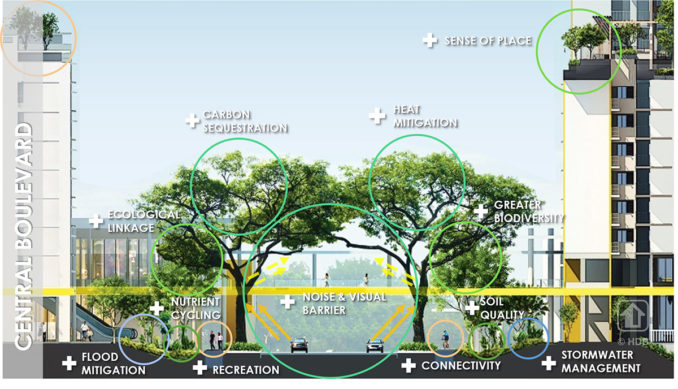
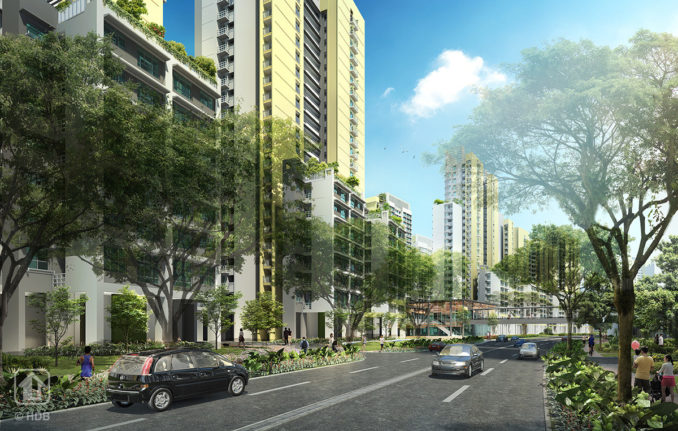
Collectively, the green and blue elements provide a wide array of active and passive spaces with ample opportunities in promoting nature appreciation and environmental stewardship, contributing towards an ideal living environment that embodies a greater sense of place, better well-being and an enhanced quality of life for residents.
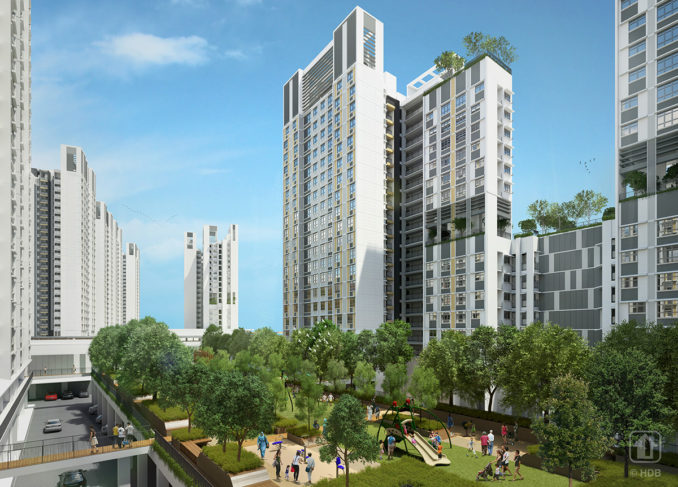
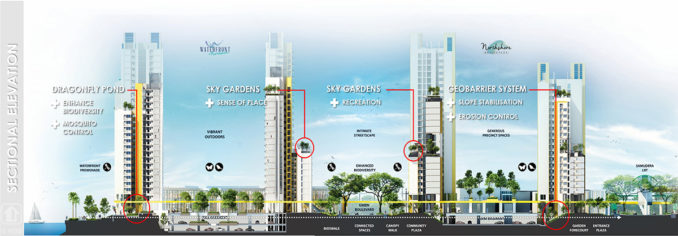
Project credits: Housing & Development Board

